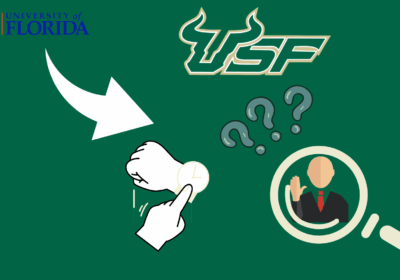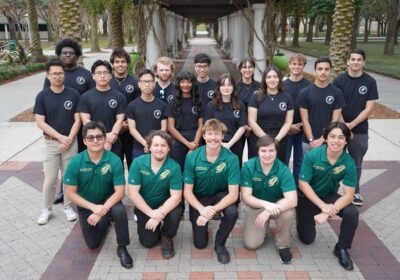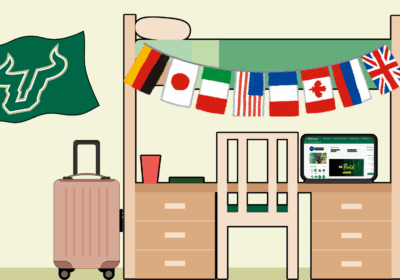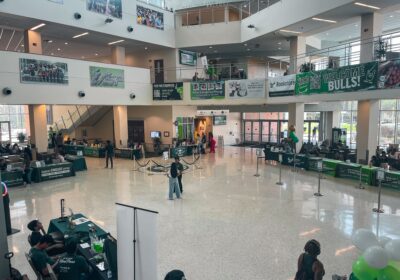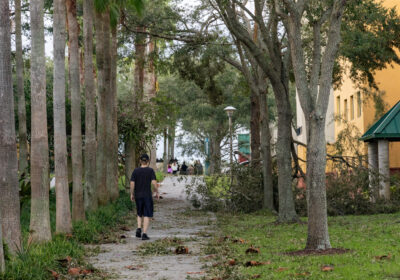Tallying up 2011-12 tuition
USF Tampa’s undergraduate tuition will increase by 15 percent this fall and may continue to do so in the future, yet not all students will face the same changes.
During their June 23 meeting on campus, the Florida Board of Governors (BOG) approved a 7 percent tuition differential fee that will be added to all USF undergraduate students’ tuitions. The fee comes in addition to an 8 percent tuition increase, passed by the Florida Legislature, for all students in the State University System.
The differential is meant to help fill budget gaps left by cuts made during this legislative season; however, it will not make up for all of the money lost to state funding cuts. During the BOG meeting, chair of the Budget Committee Tico Perez said tuition is likely to increase for the next five years by up to 15 percent each year.
“We’ll probably still need to raise tuition for a bit until we catch up,” he said. “None of us are enjoying this process. The goal is to serve the students the best we can. The tuition raise is a necessary evil.”
Students will be exempt from paying the tuition differential fee if they have purchased a pre-paid tuition contract such as Florida Prepaid before July 1, 2007, or have been continuously enrolled at USF since that date.
The 7 percent differential and 8 percent tuition increase will raise undergraduate tuition on the Tampa campus from $5,198 a year for 30 credit hours to $5,806 a year in 2011-12.
According to Florida statutes, 70 percent of the tuition differential must be spent on “purposes of undergraduate education,” while the remaining 30 percent must be allocated toward need-based financial aid.
“There are clear guidelines set by the Legislature about what this is to be used for,” said Vice Provost for Student Success Paul Dosal, who also helped author USF’s 2011-12 tuition and fee proposal. “Traditionally, USF has used it to hire more advisors (and) to bring more faculty to reduce our student-faculty ratio. In general, it supports our efforts to promote student success and improve the quality of education.”
The remaining funds will go toward the USF Grant, which supplies all need-based grant money awarded by the University, said Director of Financial Aid Billie Jo Hamilton.
“We increased that allocation for students,” Hamilton said. “We just sent letters to continuing students last week so that those awards were included in the 30 percent amount … For that program there will be more money, but keep in mind that Bright Futures was cut 20 percent.”
The Bright Futures scholarship program, which saw stricter requirements for future recipients, is not the only federally funded financial aid program that endured cuts. The summer Pell Grant will be done away with completely next summer, Hamilton said.
Because other aid programs are losing funding, the 30 percent increase in USF Grant money does not “swap out for what we’ve lost,” she said. Requirements for University aid will not be changed, she said, though funds are meant to “minimize the increase in tuition and fees for our neediest students.”
Though out-of-state undergraduate students will see the same 8 percent base tuition increase as everyone else, the out-of-state fee will decrease by 15 percent in hopes of attracting more students, Dosal said.
Currently, non-resident undergraduate tuition and fees are more than triple those of resident undergraduates, yet “the incoming class is larger than it has ever been in terms of out-of-state students,” he said, which helps to offset the 15 percent cut.
With the 15 percent decrease in the out-of-state fee, undergraduate tuition for one year, or 30 credit hours, will be $14,994 in 2011-12 – $1,014 less than this year’s $16,008 cost.
Resident graduate students will see a 10 percent increase in tuition, with an additional 5 percent increase for students in business, engineering, certified registered nurse anesthetist and doctorate of nursing practice programs. Out-of-state graduate students will also see a 6 percent increase in fees.
Dosal said some graduate programs will see more increases than others because they are “high cost (and) demand programs.”
“Those disciplines are set apart from others in terms of their job market and salary expectations,” he said. “The faculty teaching those colleges command higher market value and the graduates from those grad schools, when they enter the market, they’ll command higher salaries, so we increase those to put them at a more competitive and fair level.”
USF serves one of the highest number of limited-income students in the country, Hamilton said, and is currently ranked fifth in the U.S. in terms of Pell Grant volume. The 30 percent increase to the USF Grant program should, therefore, be seen as a benefit.
“Financial aid starts in January for the coming fall, so a lot of students have already done what they need to do,” Hamilton said. “The best thing to do is fill out the FAFSA, which is now a requirement to receive Bright Futures … At this point in the year we’re limited in our funding. If (students) qualify for Pell Grants, they’ll get that. If not, they’ll get a loan package.”
All tuition and fee increases will go back into the University’s general revenue, Dosal said, which are only used to fund academic operations and do not help mitigate cuts to construction funds.
“This is now the third year of tuition increases of similar size, but Florida remains 48th in the nation in tuition costs,” he said. “We’re still in a relatively good place in terms of student access to higher education despite some really difficult budget challenges. State funding continues to drop and state policymakers are moving in a direction where students and their families are picking up more and more of the tab … We’re also facing, in the coming year, the loss of federal stimulus money and … boy, times are tough for everybody.”
– Additional reporting by Divya Kumar



